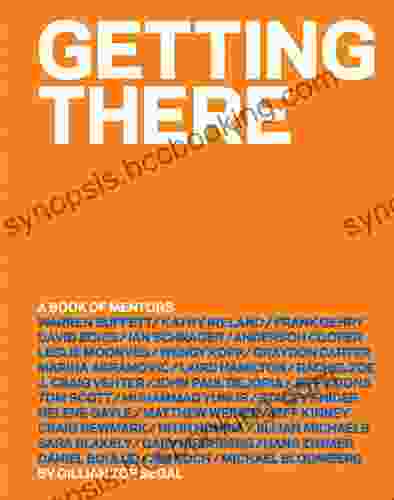From Excel to Python: The Ultimate Guide for Data Analysts and Scientists

4.6 out of 5
| Language | : | English |
| File size | : | 7446 KB |
| Text-to-Speech | : | Enabled |
| Screen Reader | : | Supported |
| Enhanced typesetting | : | Enabled |
| Print length | : | 409 pages |
As a data analyst or scientist, you're probably familiar with Microsoft Excel. It's a powerful tool for data manipulation, analysis, and visualization. However, if you're looking to take your career to the next level, you need to learn Python.
Python is a general-purpose programming language that's increasingly popular for data science. It's versatile, easy to learn, and has a wide range of libraries and tools for data analysis.
This guide will teach you everything you need to know to transition from Excel to Python. We'll cover the basics of Python, including data types, variables, and control flow. We'll also show you how to use Python for data manipulation, analysis, and visualization.
Chapter 1: Getting Started with Python
In this chapter, you'll learn the basics of Python, including how to install Python, write your first Python program, and use the Python interpreter.
Installing Python
To install Python, visit the official Python website and download the latest version. Once the download is complete, run the installer and follow the on-screen instructions.
Writing Your First Python Program
To write your first Python program, open a text editor and type the following code:
print("Hello, world!")Save the file with a .py extension (e.g., hello.py) and run the program from the command line:
python hello.pyYou should see the following output:
Hello, world!Using the Python Interpreter
The Python interpreter is a powerful tool for experimenting with Python code. To use the interpreter, open a terminal window and type python.
pythonYou can now enter Python code into the interpreter and see the results immediately.
Chapter 2: Data Types and Variables
In this chapter, you'll learn about Python's data types and how to declare and use variables.
Data Types
Python has a variety of data types, including:
- Integers
- Floats
- Strings
- Lists
- Tuples
- Dictionaries
To determine the data type of a variable, use the type() function:
x = 1 print(type(x)) # Output: <class> </class>Variables
Variables are used to store data in Python. To declare a variable, simply assign it a value:
name = "John" age = 30You can use the print() function to display the value of a variable:
print(name) # Output: John print(age) # Output: 30Chapter 3: Control Flow
Control flow statements allow you to control the execution of your Python code. The most common control flow statements are:
- If statements
- For loops
- While loops
If Statements
If statements are used to execute blocks of code only if certain conditions are met. The syntax of an if statement is as follows:
if condition: # Code to be executed if the condition is trueFor example, the following code prints the string "Hello, world!" only if the variable x is equal to 1:
x = 1 if x == 1: print("Hello, world!")For Loops
For loops are used to iterate over sequences of data. The syntax of a for loop is as follows:
for item in sequence: # Code to be executed for each item in the sequenceFor example, the following code prints each item in the list my_list:
my_list = [1, 2, 3, 4, 5] for item in my_list: print(item)While Loops
While loops are used to execute blocks of code as long as certain conditions are met. The syntax of a while loop is as follows:
while condition: # Code to be executed while the condition is trueFor example, the following code prints the number 10 ten times:
i = 0 while iChapter 4: Data Manipulation with Pandas
Pandas is a powerful Python library for data manipulation and analysis. It provides a number of data structures and functions that make it easy to work with large datasets.
Creating a DataFrame
A DataFrame is a two-dimensional table of data. It is the most commonly used data structure in Pandas.
To create a DataFrame, you can use the pandas.DataFrame() function. The following code creates a DataFrame from a list of lists:
import pandas as pd data = [['John', 30], ['Mary', 25], ['Bob', 40]] df = pd.DataFrame(data, columns=['name', 'age'])The resulting DataFrame will look like this:
name age 0 John 30 1 Mary 25 2 Bob 40Data Manipulation with Pandas
Pandas provides a number of functions for data manipulation. Some of the most common functions include:
- head(): Returns the first n rows of a DataFrame.
- tail(): Returns the last n rows of a DataFrame.
- sort_values(): Sorts a DataFrame by one or more columns.
- groupby(): Groups a DataFrame by one or more columns and applies a function to each group.
For example, the following
4.6 out of 5
| Language | : | English |
| File size | : | 7446 KB |
| Text-to-Speech | : | Enabled |
| Screen Reader | : | Supported |
| Enhanced typesetting | : | Enabled |
| Print length | : | 409 pages |
Do you want to contribute by writing guest posts on this blog?
Please contact us and send us a resume of previous articles that you have written.
 Book
Book Novel
Novel Page
Page Chapter
Chapter Text
Text Story
Story Genre
Genre Reader
Reader Library
Library Paperback
Paperback E-book
E-book Magazine
Magazine Newspaper
Newspaper Paragraph
Paragraph Sentence
Sentence Bookmark
Bookmark Shelf
Shelf Glossary
Glossary Bibliography
Bibliography Foreword
Foreword Preface
Preface Synopsis
Synopsis Annotation
Annotation Footnote
Footnote Manuscript
Manuscript Scroll
Scroll Codex
Codex Tome
Tome Bestseller
Bestseller Classics
Classics Library card
Library card Narrative
Narrative Biography
Biography Autobiography
Autobiography Memoir
Memoir Reference
Reference Encyclopedia
Encyclopedia Steve Erickson
Steve Erickson Gerold Frank
Gerold Frank Theodore Annemann
Theodore Annemann Michael Dooley
Michael Dooley Geoff Greig
Geoff Greig Pam Laricchia
Pam Laricchia Emily Suzanne Clark
Emily Suzanne Clark Ged Martin
Ged Martin Ravin Kumar
Ravin Kumar Gary Webster
Gary Webster Michael E Mcgrath
Michael E Mcgrath Stephen White
Stephen White Garry Apgar
Garry Apgar Robert E Hampson
Robert E Hampson Douglas Murray
Douglas Murray Emmanuel Acho
Emmanuel Acho Gary A Klein
Gary A Klein Jon M Fishman
Jon M Fishman George Seldes
George Seldes Don Nardo
Don Nardo
Light bulbAdvertise smarter! Our strategic ad space ensures maximum exposure. Reserve your spot today!
 Terence NelsonFollow ·6.6k
Terence NelsonFollow ·6.6k Dennis HayesFollow ·16.8k
Dennis HayesFollow ·16.8k Greg CoxFollow ·2.2k
Greg CoxFollow ·2.2k Al FosterFollow ·9.2k
Al FosterFollow ·9.2k Morris CarterFollow ·18.9k
Morris CarterFollow ·18.9k Dylan MitchellFollow ·3.9k
Dylan MitchellFollow ·3.9k Kenzaburō ŌeFollow ·5.6k
Kenzaburō ŌeFollow ·5.6k Elton HayesFollow ·5.4k
Elton HayesFollow ·5.4k

 Robert Heinlein
Robert HeinleinUnveiling Humanism in China and the West: A Journey...
In our rapidly...

 Brian Bell
Brian BellBlind Boy's Unwavering Struggle Against Abuse and the...
In the tapestry of...

 Craig Carter
Craig CarterBuilding Wealth While Working for Uncle Sam: The Ultimate...
## ### Are you a federal employee who wants...

 Raymond Parker
Raymond ParkerUnveiling the Secrets of Arabic Survival: The Ultimate...
Embarking on a journey to unravel the...
4.6 out of 5
| Language | : | English |
| File size | : | 7446 KB |
| Text-to-Speech | : | Enabled |
| Screen Reader | : | Supported |
| Enhanced typesetting | : | Enabled |
| Print length | : | 409 pages |















